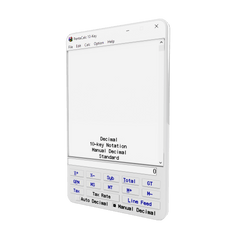What 10 Key speed do you need for a data entry job?
The world runs on data?
Much of the data entry industry still relies on the hands, eyes, and fingers of data entry operators. In just about every data processing ecosystem, from the smallest home business to the largest multinational corporation, a individuals are entering data. The individual's 10 Key speed can have a direct impact on the efficiency and power of the overall data processing system they are part of.
Traditional Data Entry Style and Speed
Data entry can mean a lot of things, from transcription of text to court reporting to entering values into a spreadsheet.
In the past, Data Entry Speed was measured in Words per Minute (WPM) and was generally used to describe typing speed on a traditional QWERTY-style keyboard. A professional typist would be expected to average about 80 words per minute to qualify for most professional jobs, although people with a measured WPM as low as 50 might be considered.
Competitive Data Entry and Speed
In today's world, the concept of data entry speed has become complicated. With 10-
Numeric data entry using a 10-Key Pad is generally expected to be much faster, as no thought has to be put into the meaning or formatting of the text.
Competitive speeds for numeric data entry are generally around 10,000 KPH and often as high as 12,000 KPH.
The Future of Data Entry and Speed
Scanning and Optical Character Recognition (OCR) technologies are poised to become accurate and reliable enough to supplant human operators. However, to














